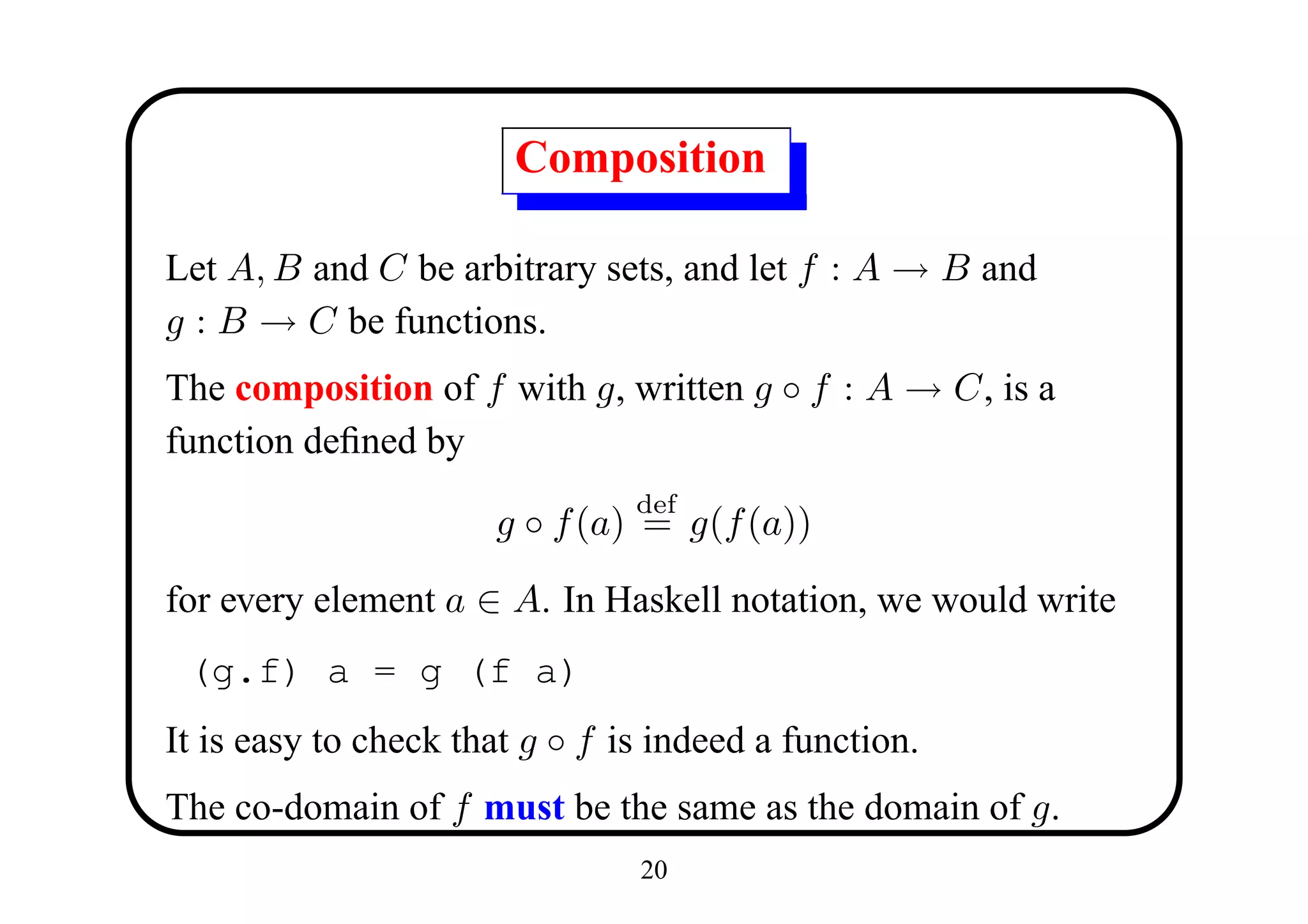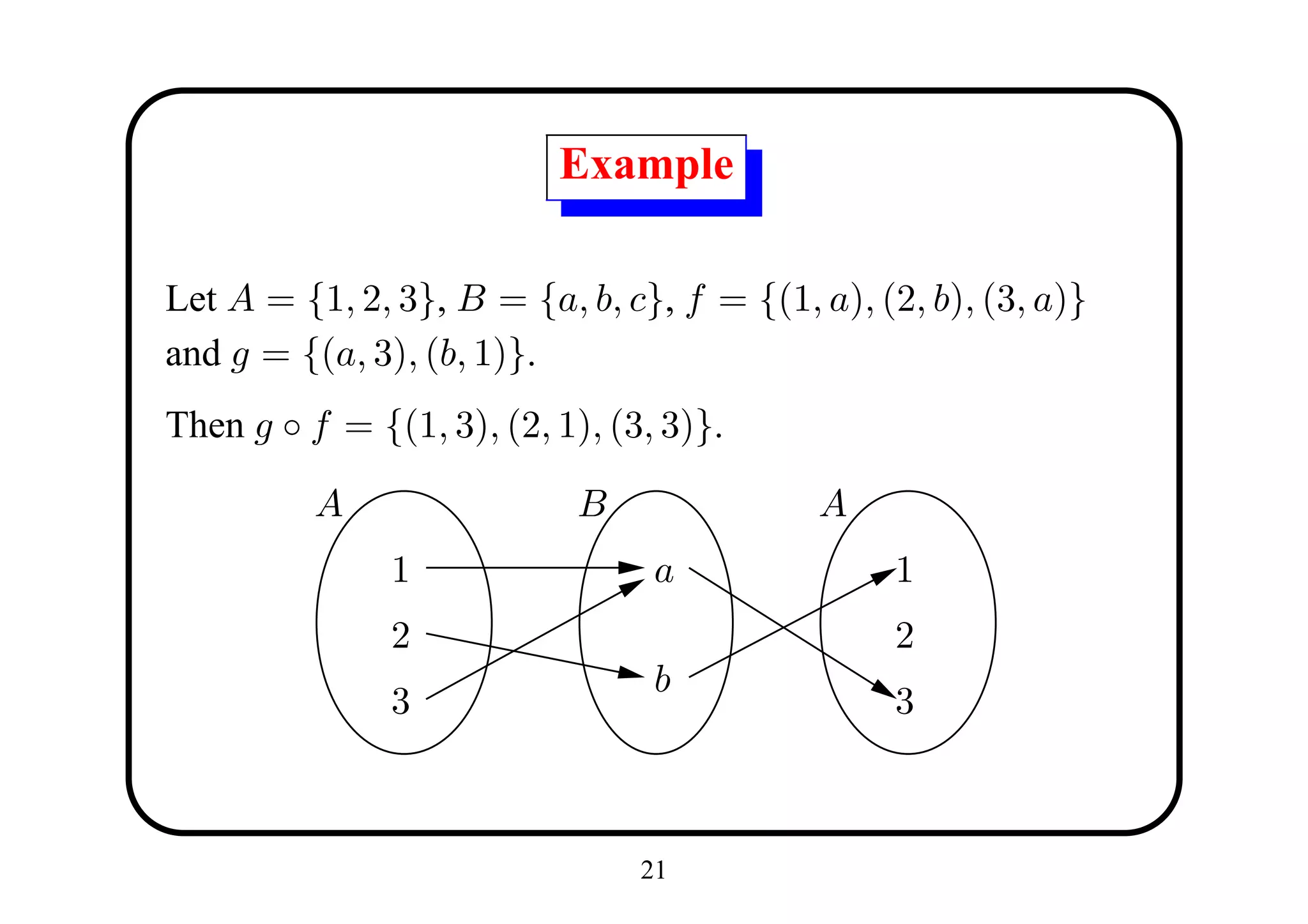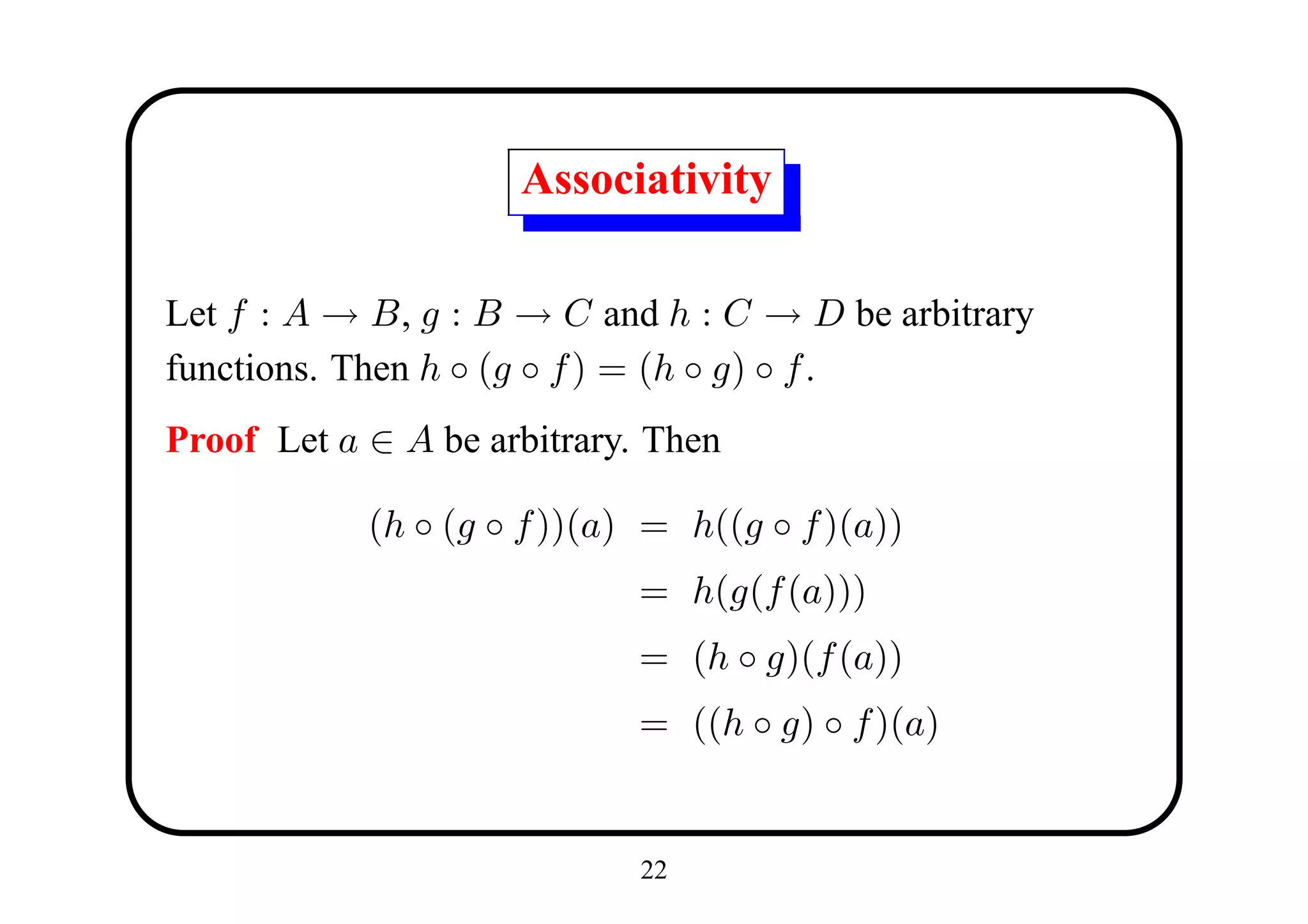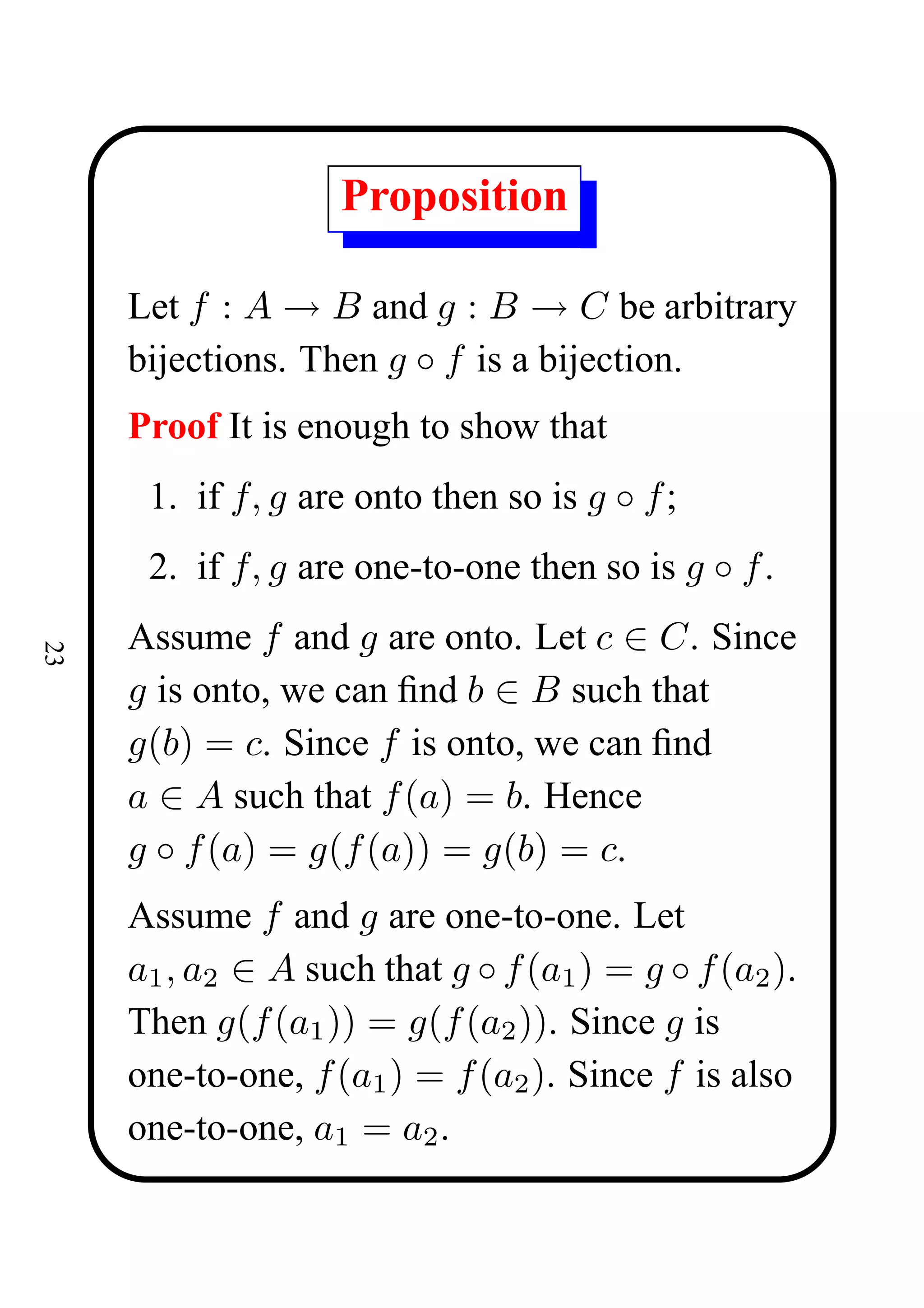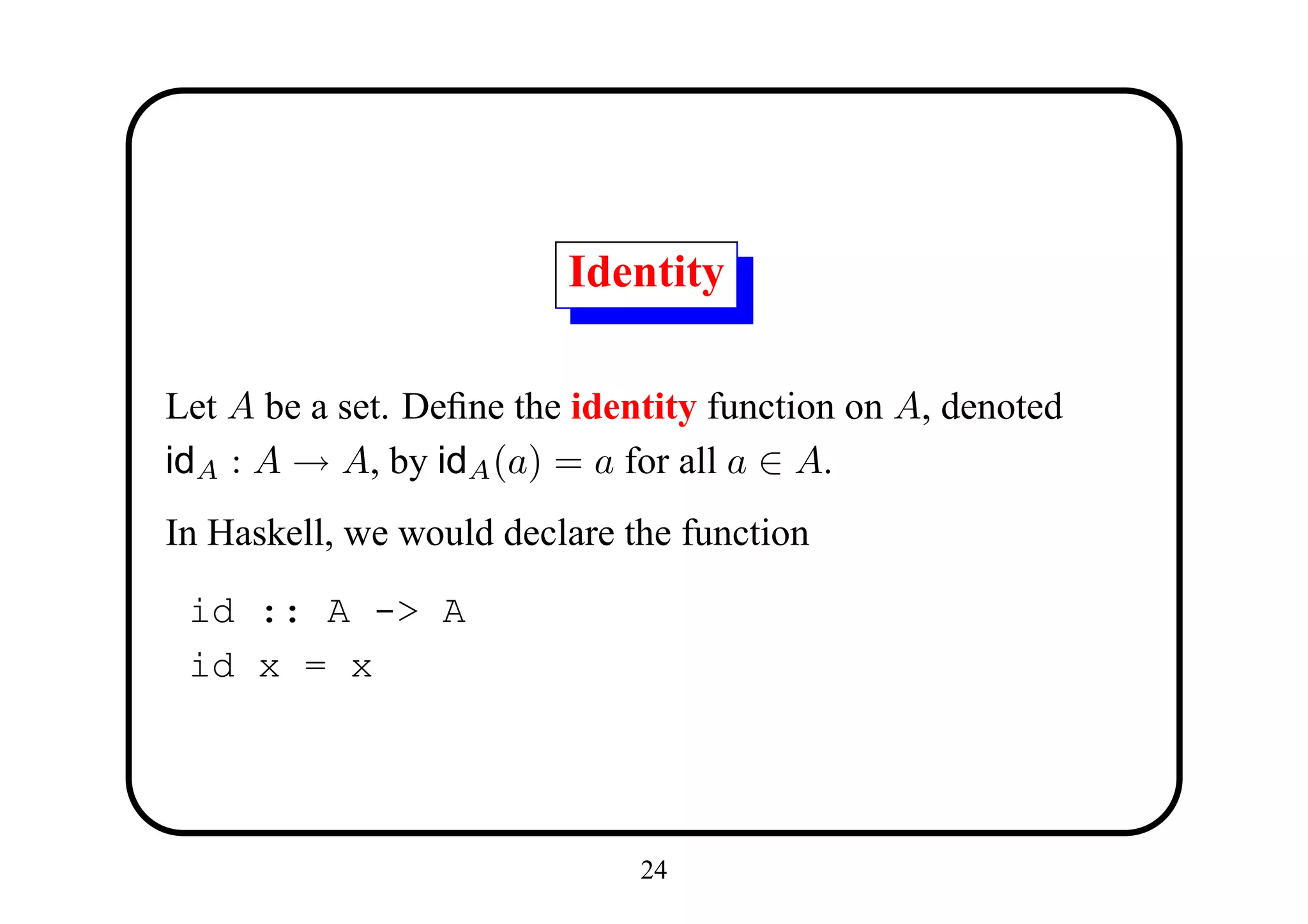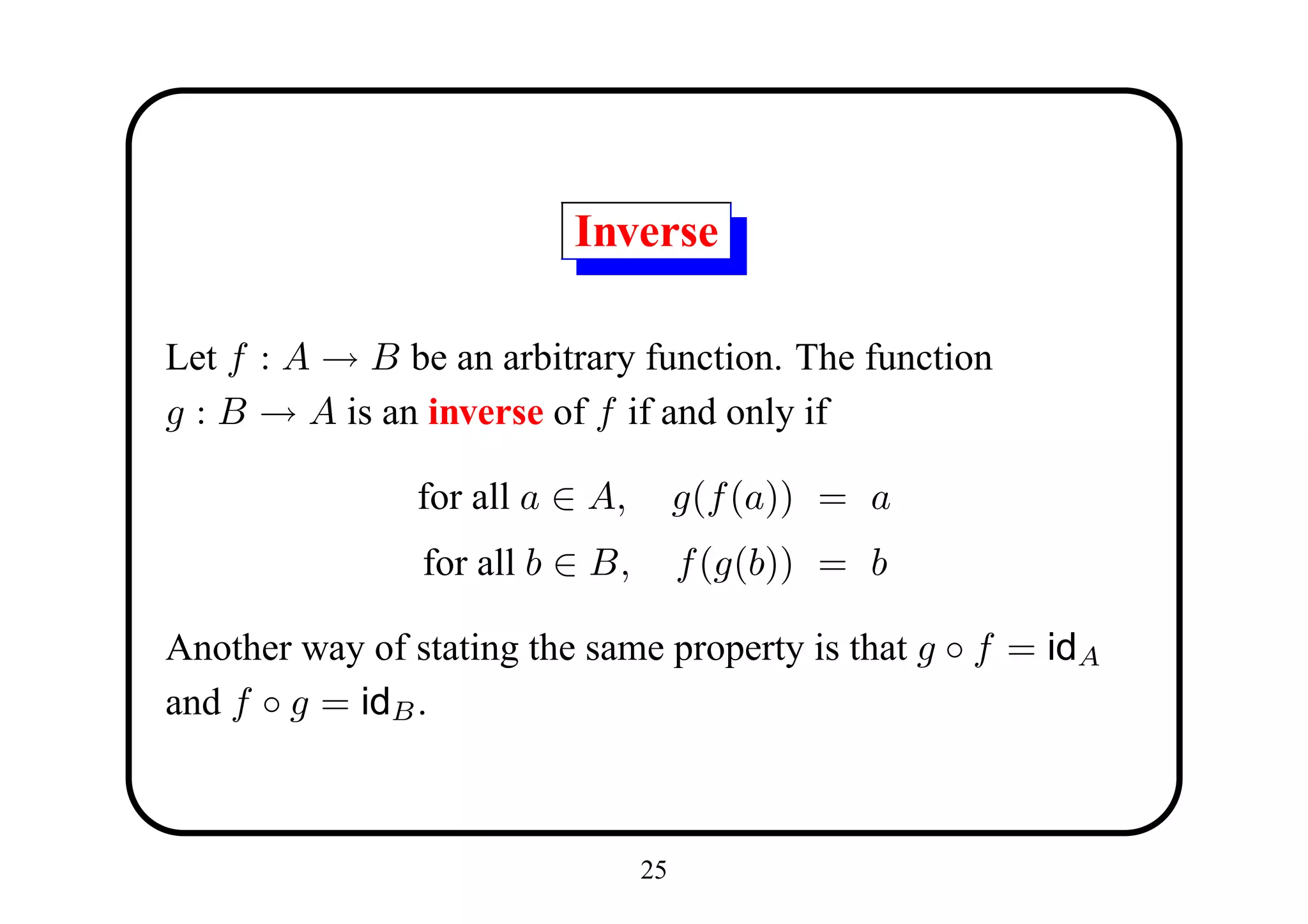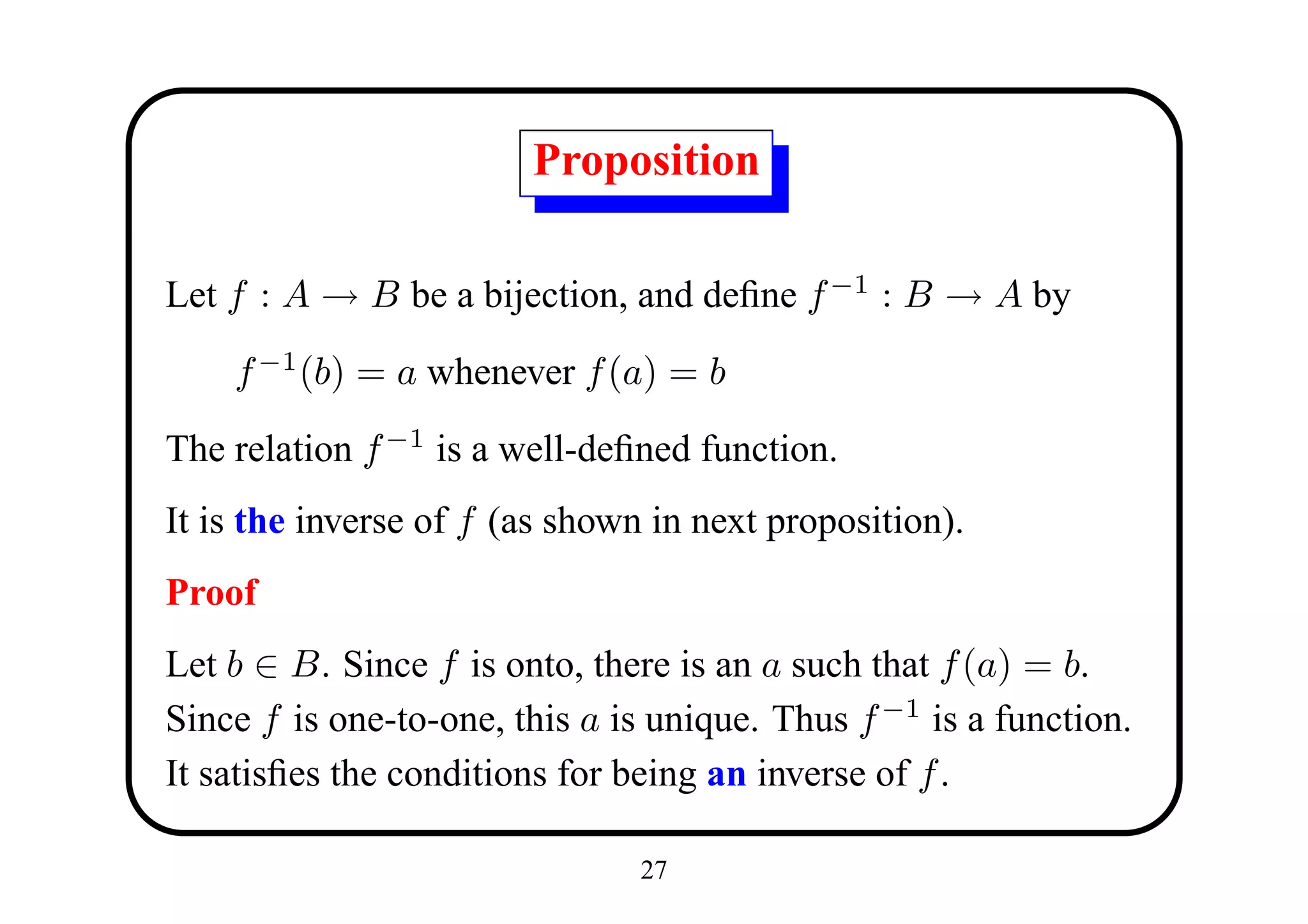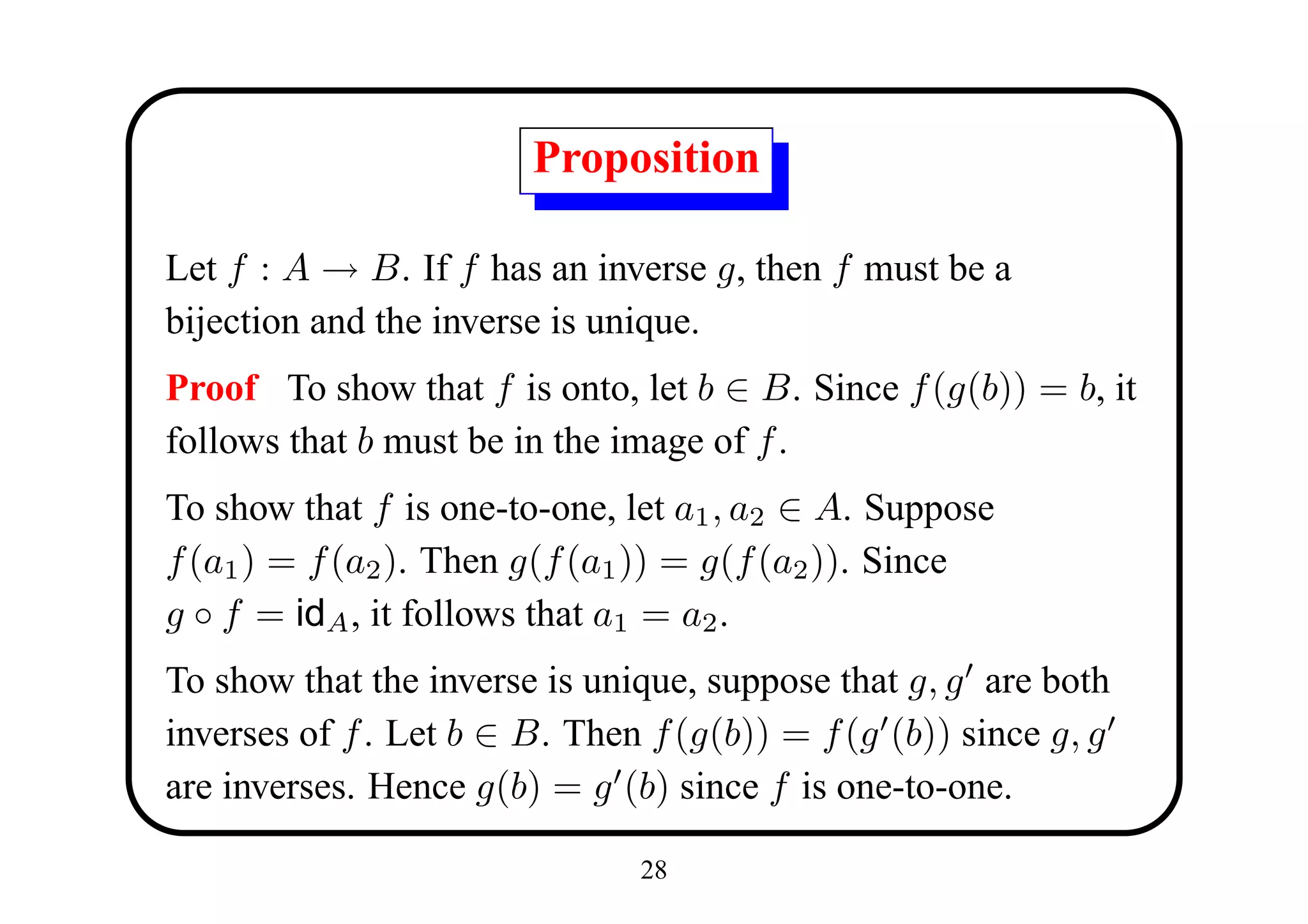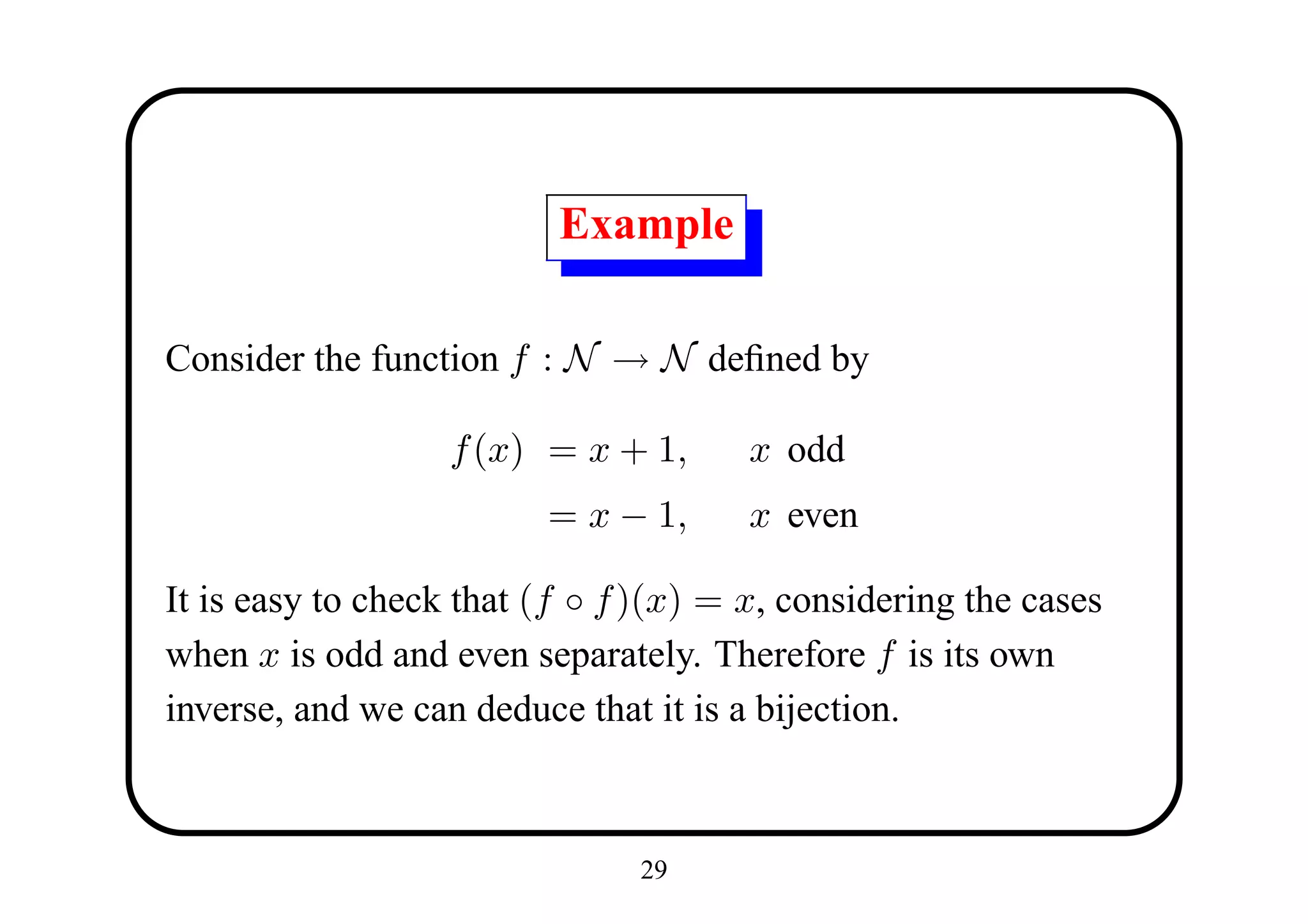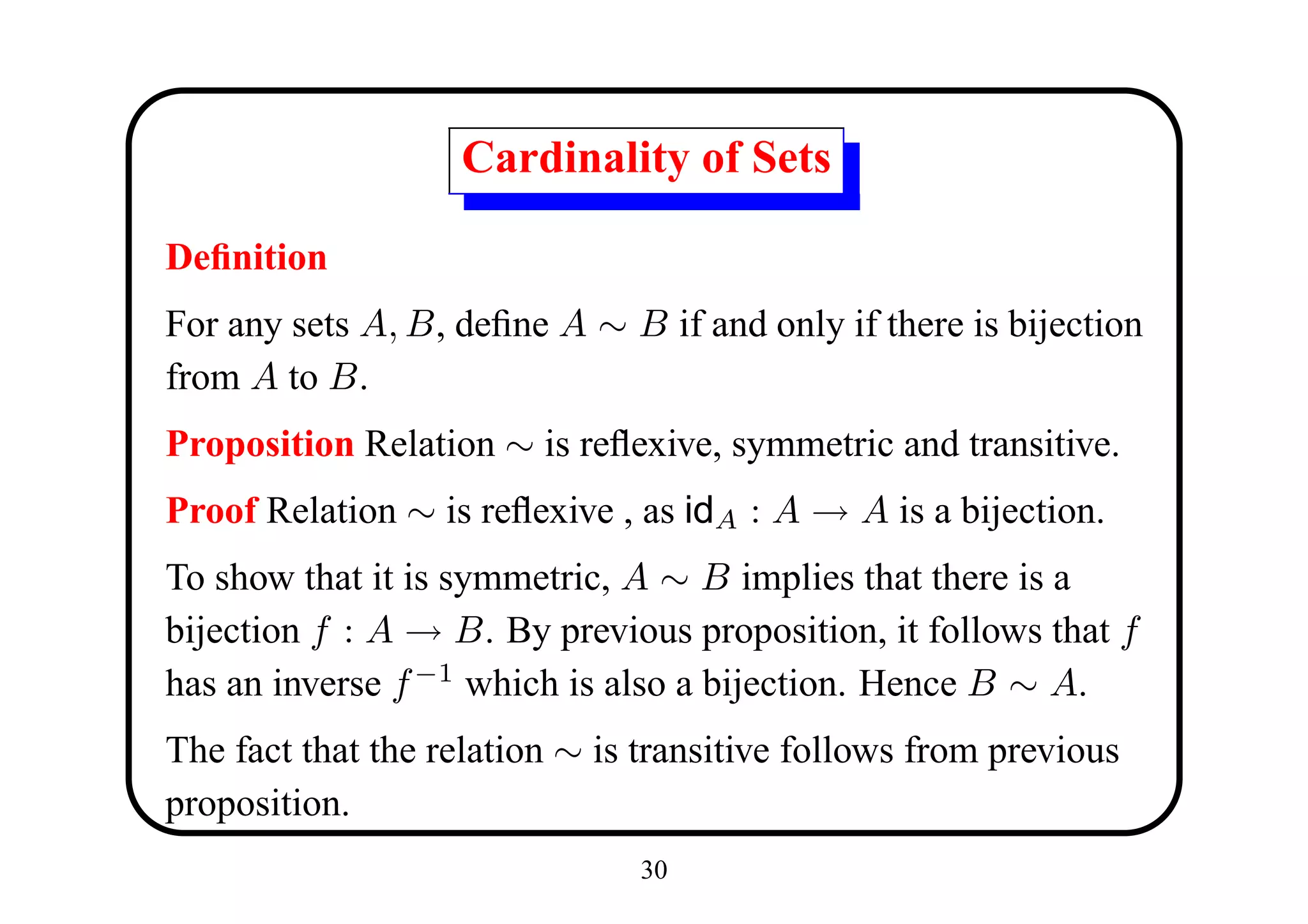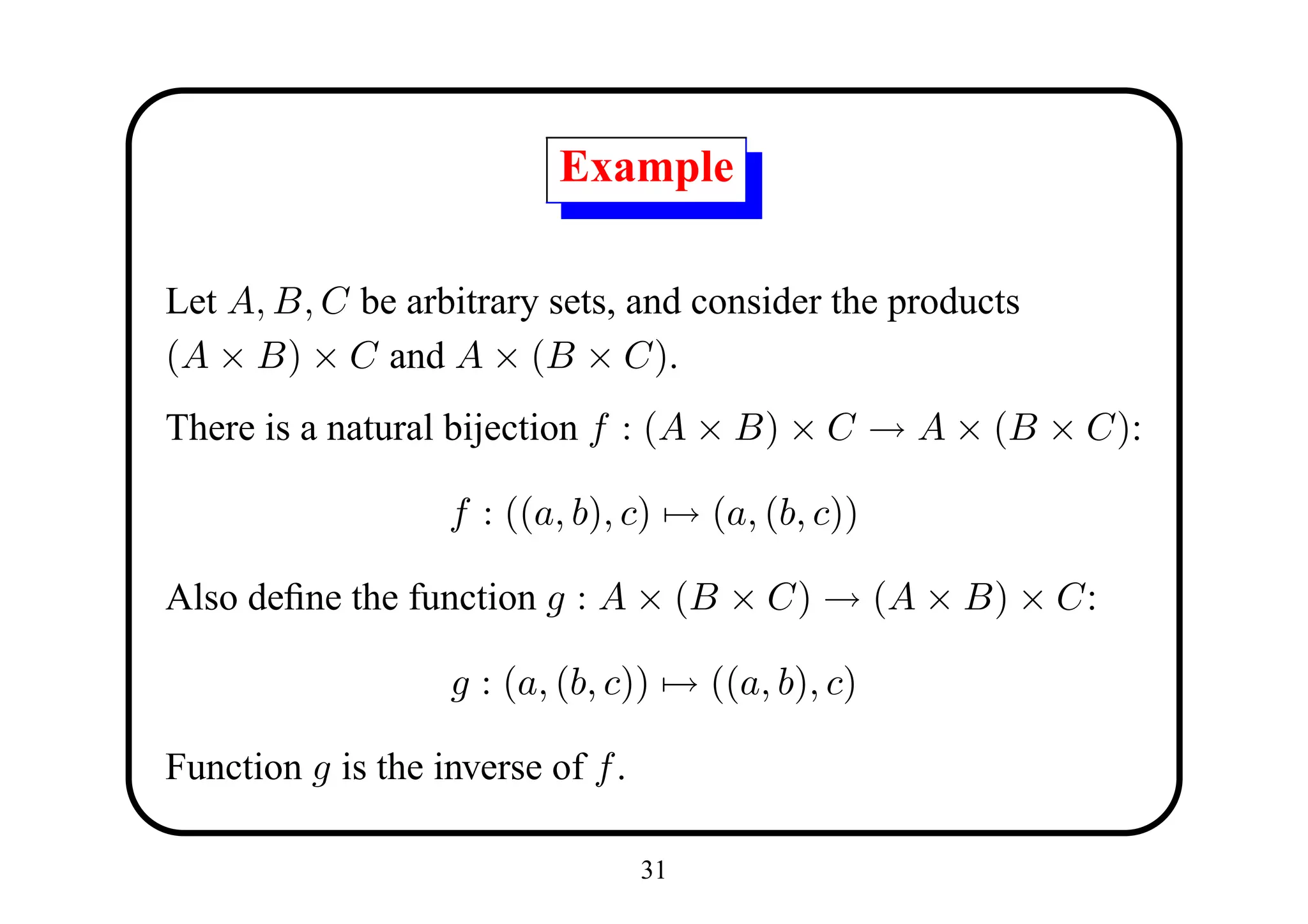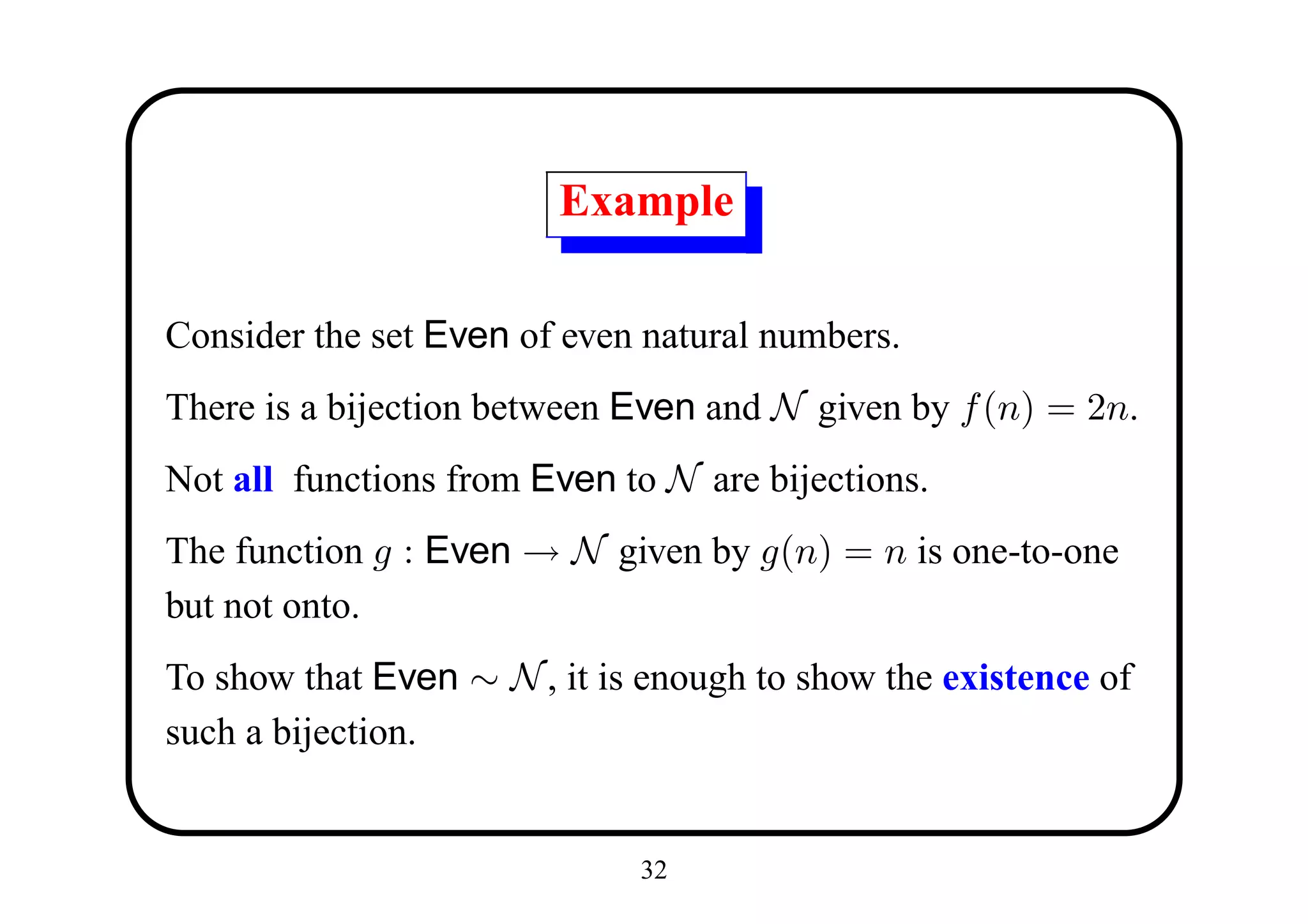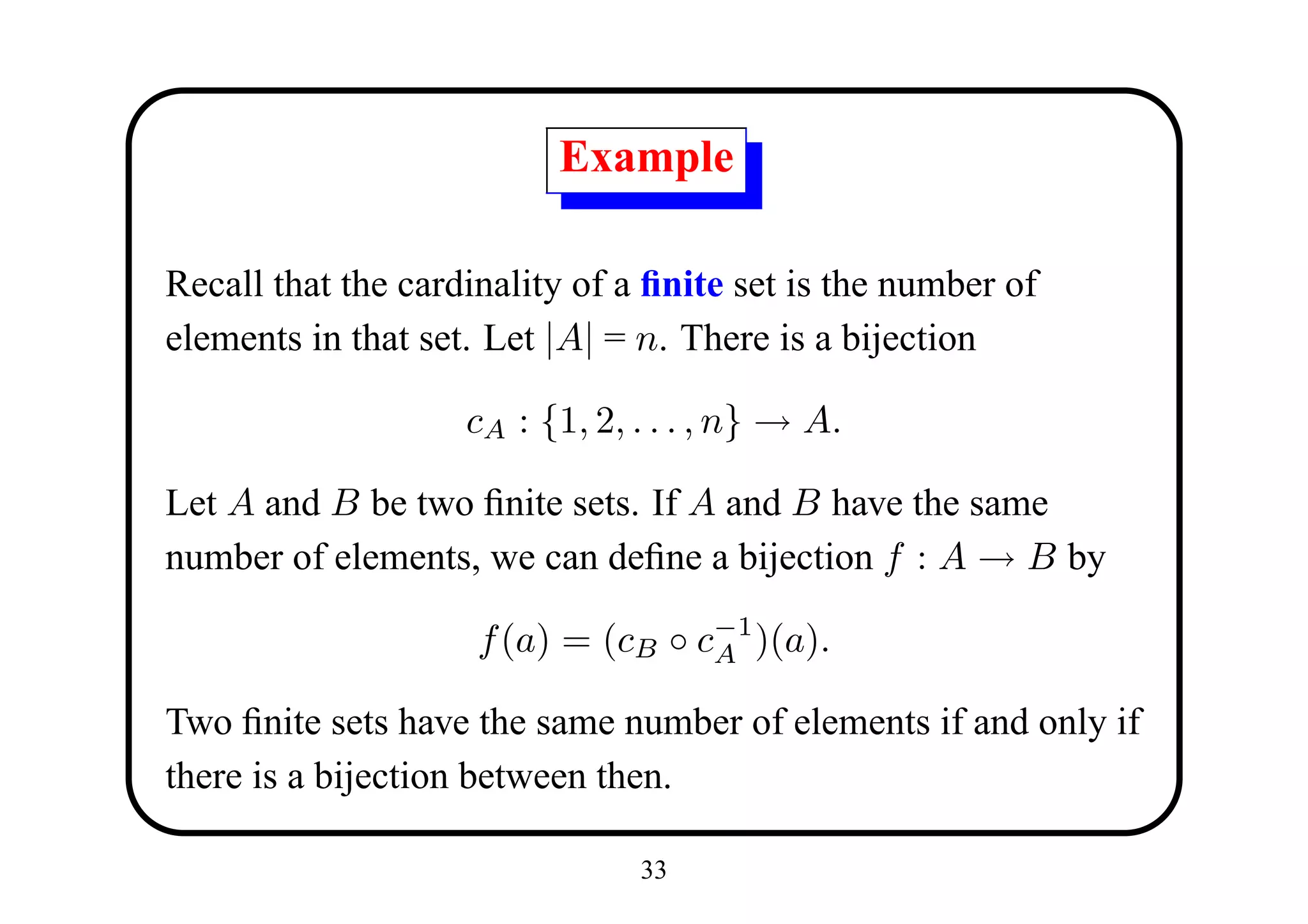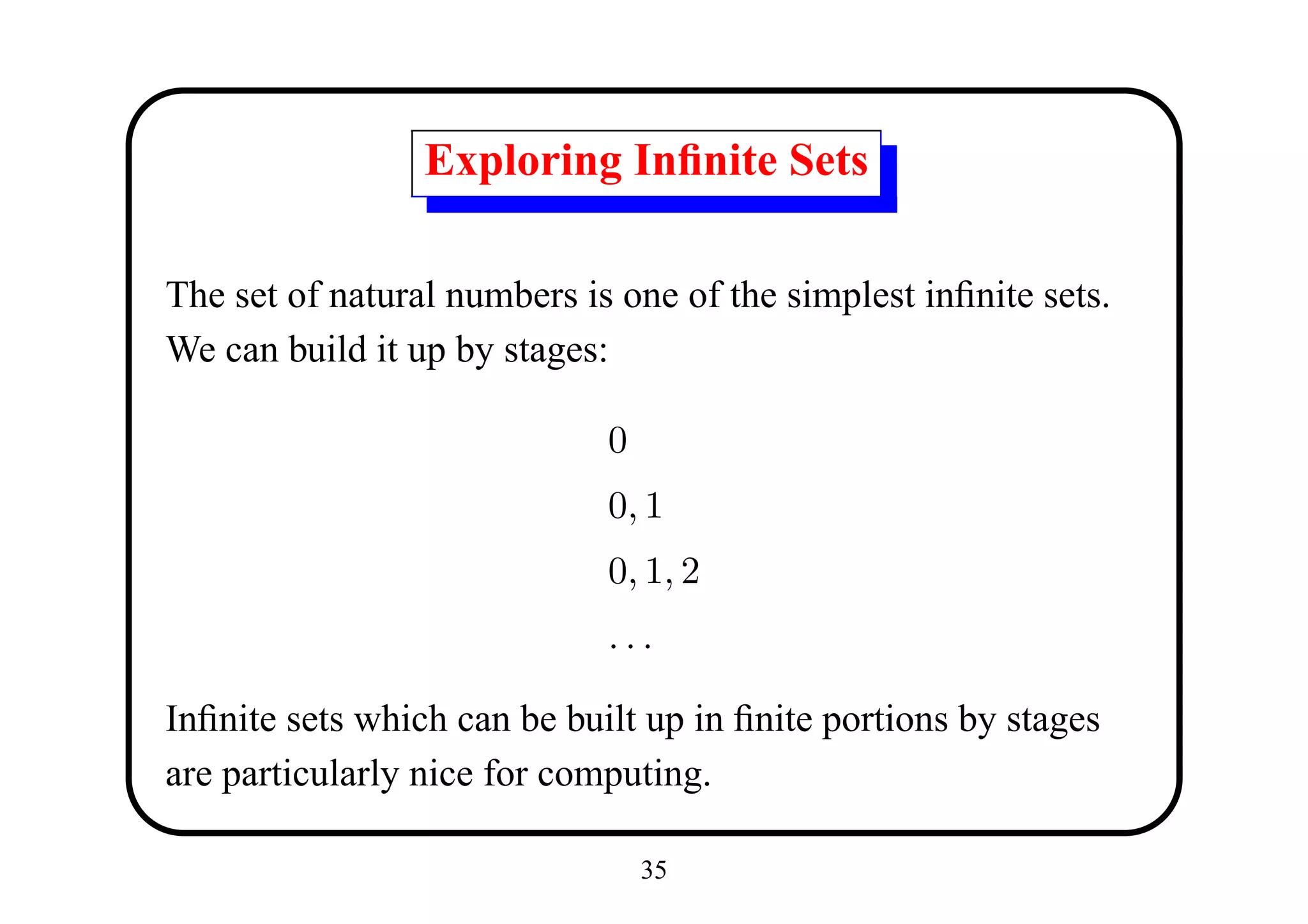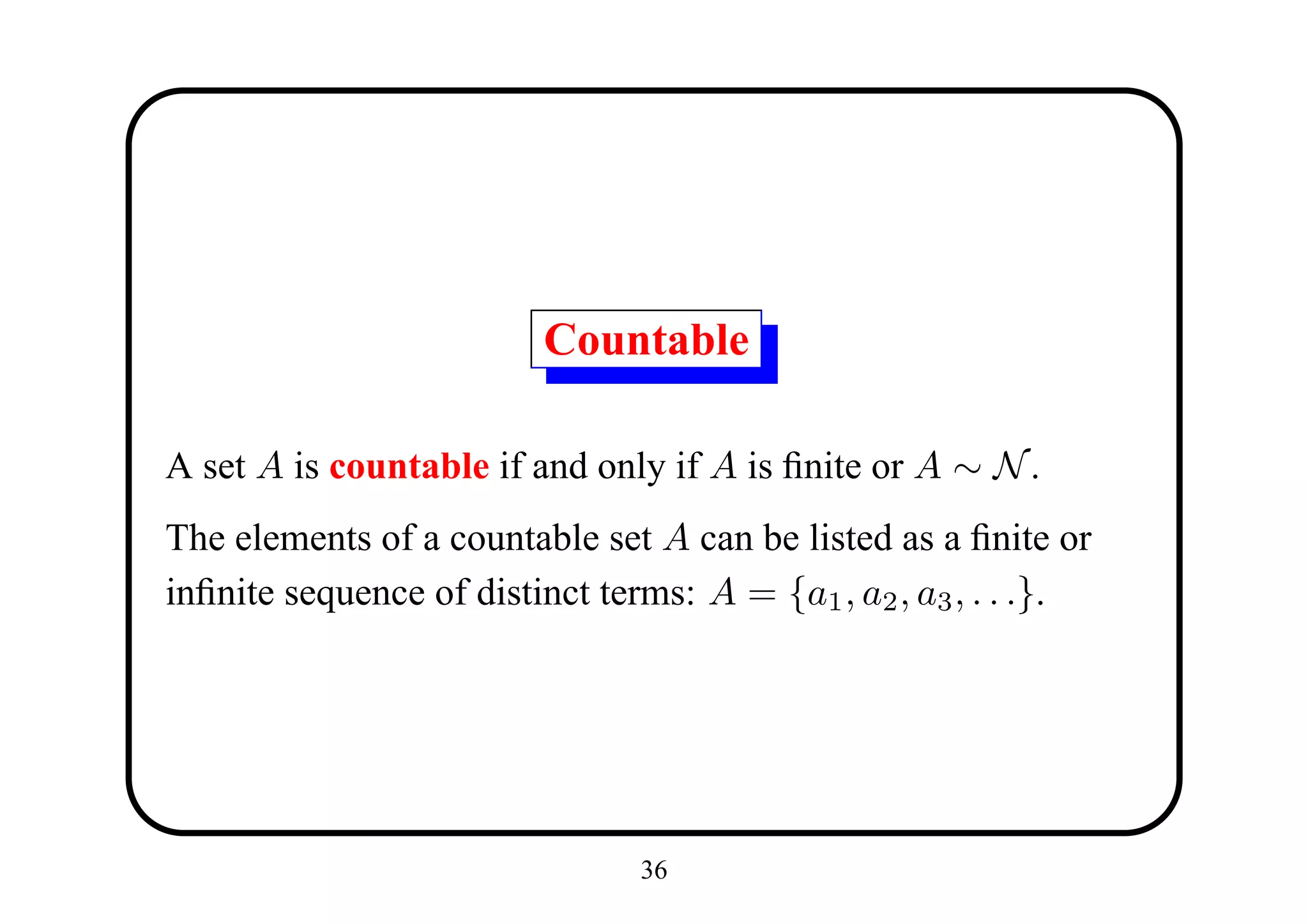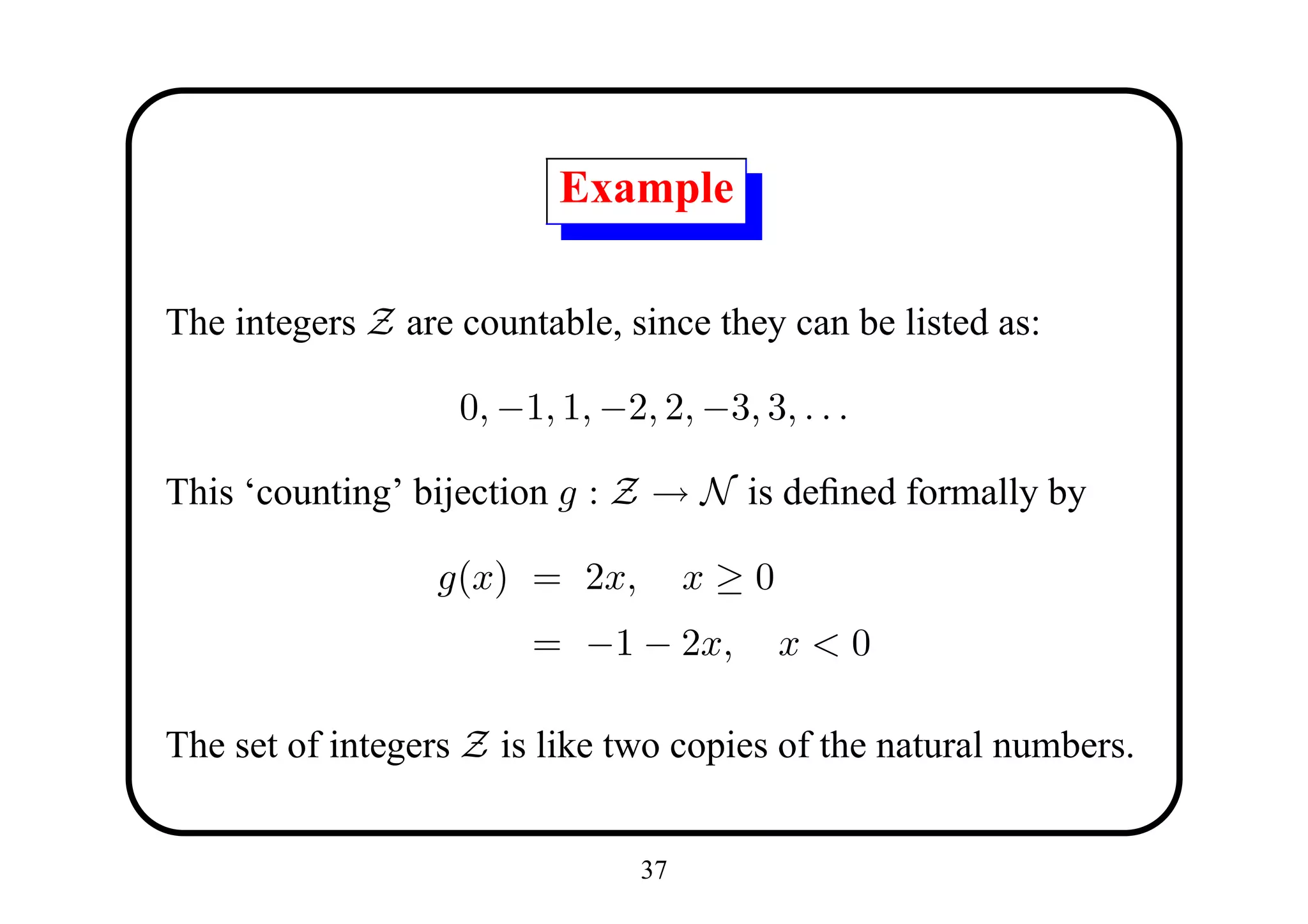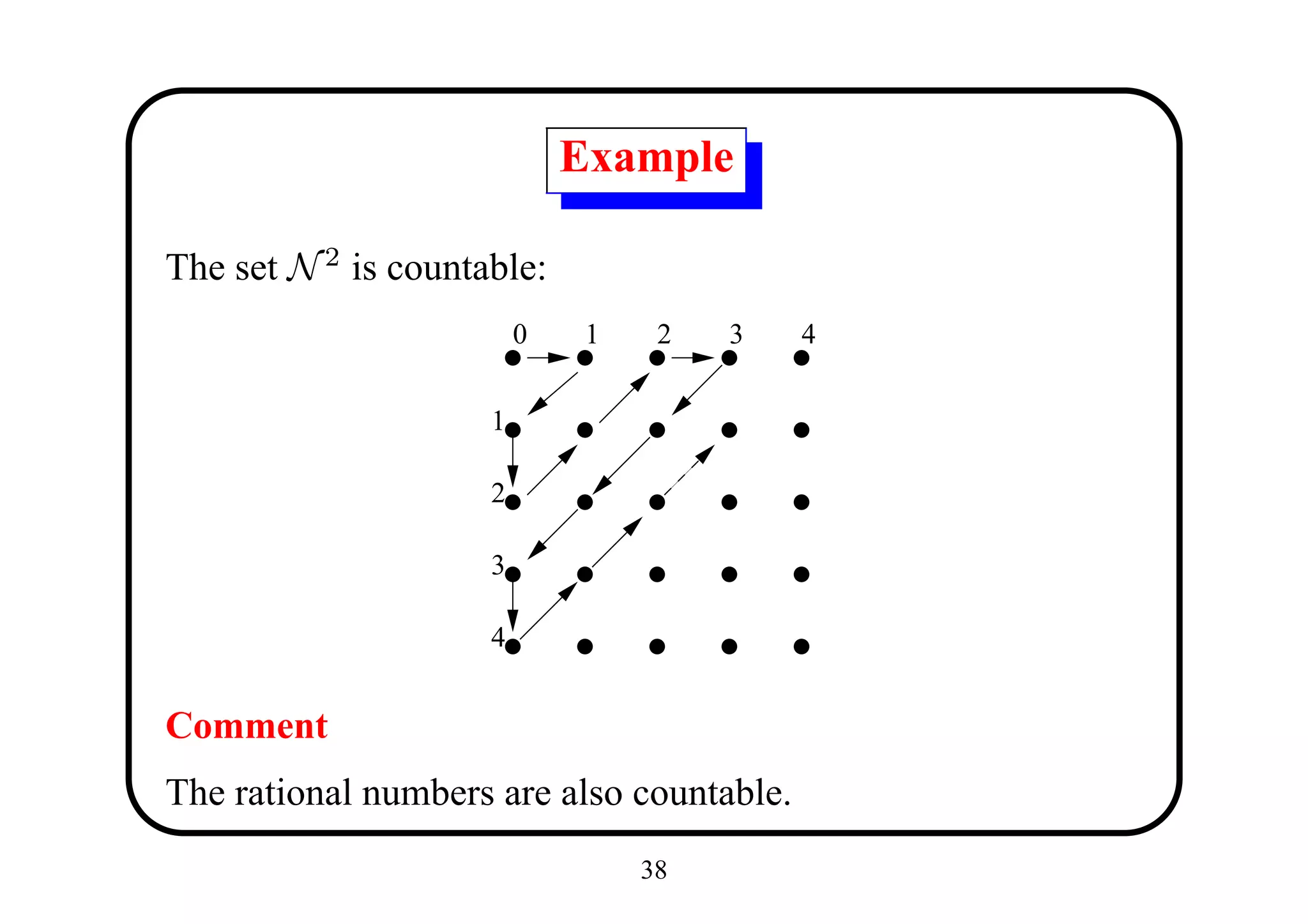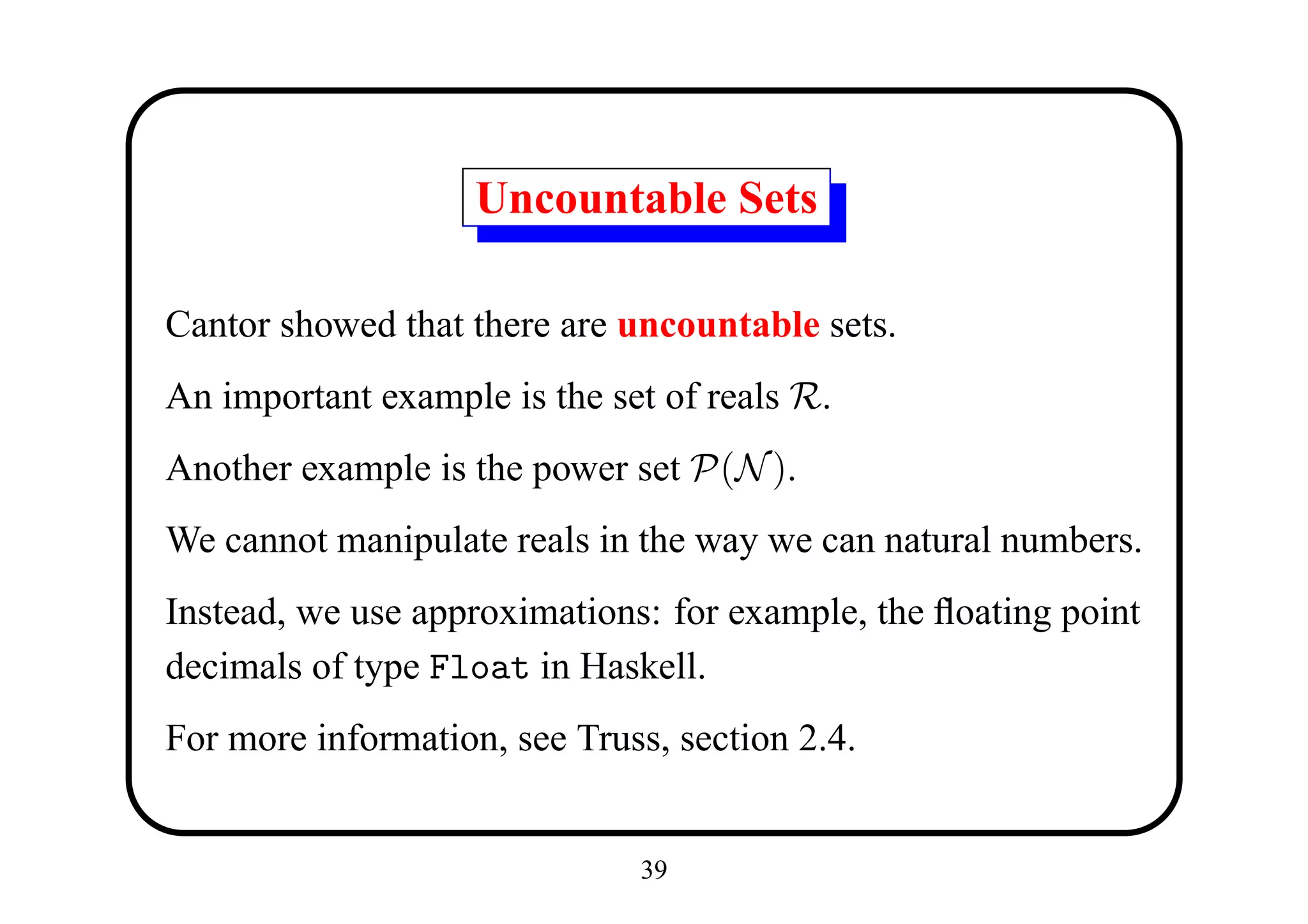The document introduces functions and some of their properties. It defines a function as a relation where each element in the domain is mapped to exactly one element in the codomain. It discusses one-to-one, onto, and bijective functions. It also covers composition, associativity, identity functions, and the pigeonhole principle as it relates to functions between finite sets.

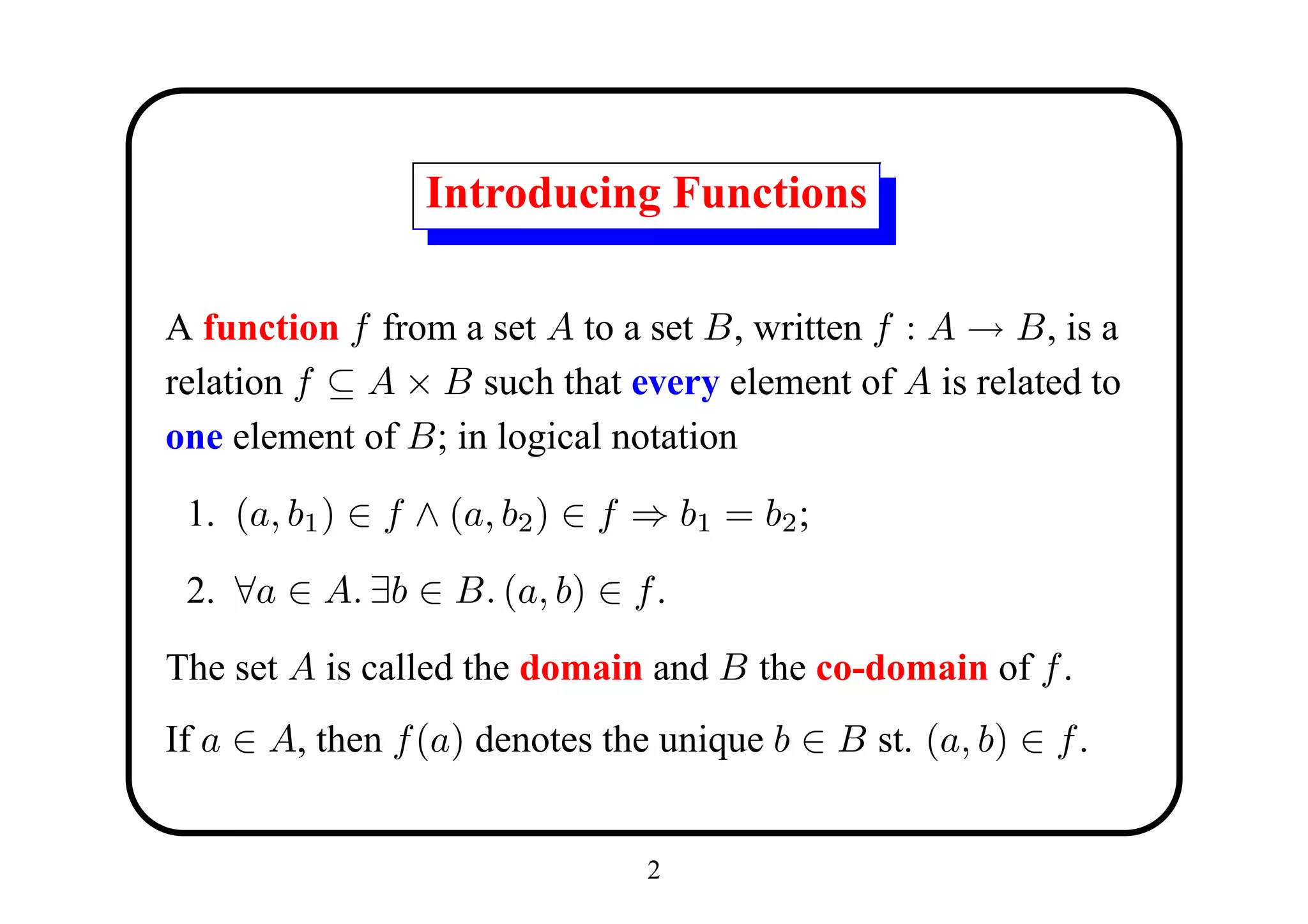
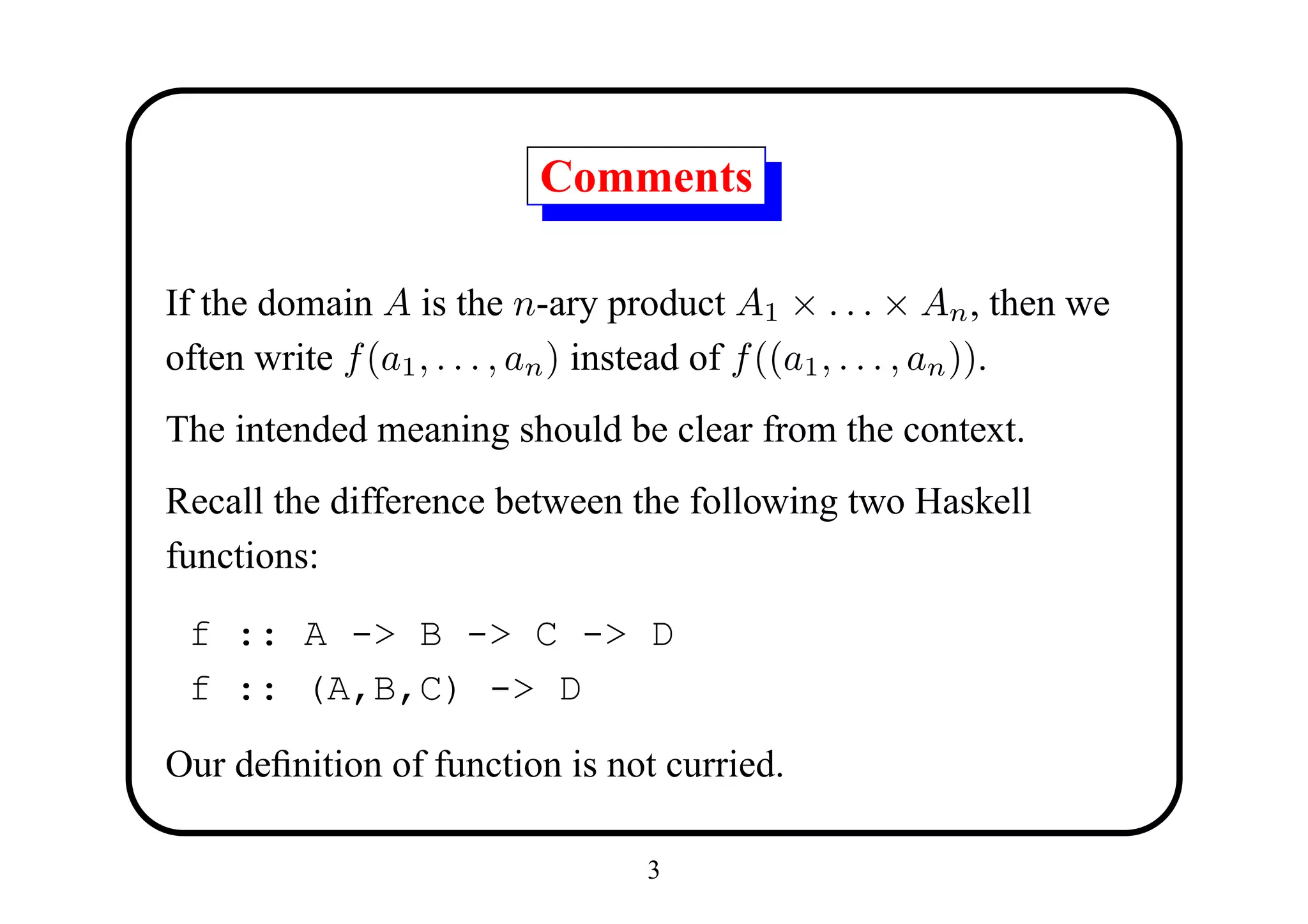
![Image Set
Let f : A → B. For any X ⊆ A, define the image of X under
f to be
def
f [X] = {f (a) : a ∈ X}
The set f [A] is called the image set of f .
4](https://image.slidesharecdn.com/8functions-120924225627-phpapp02/75/8functions-4-2048.jpg)
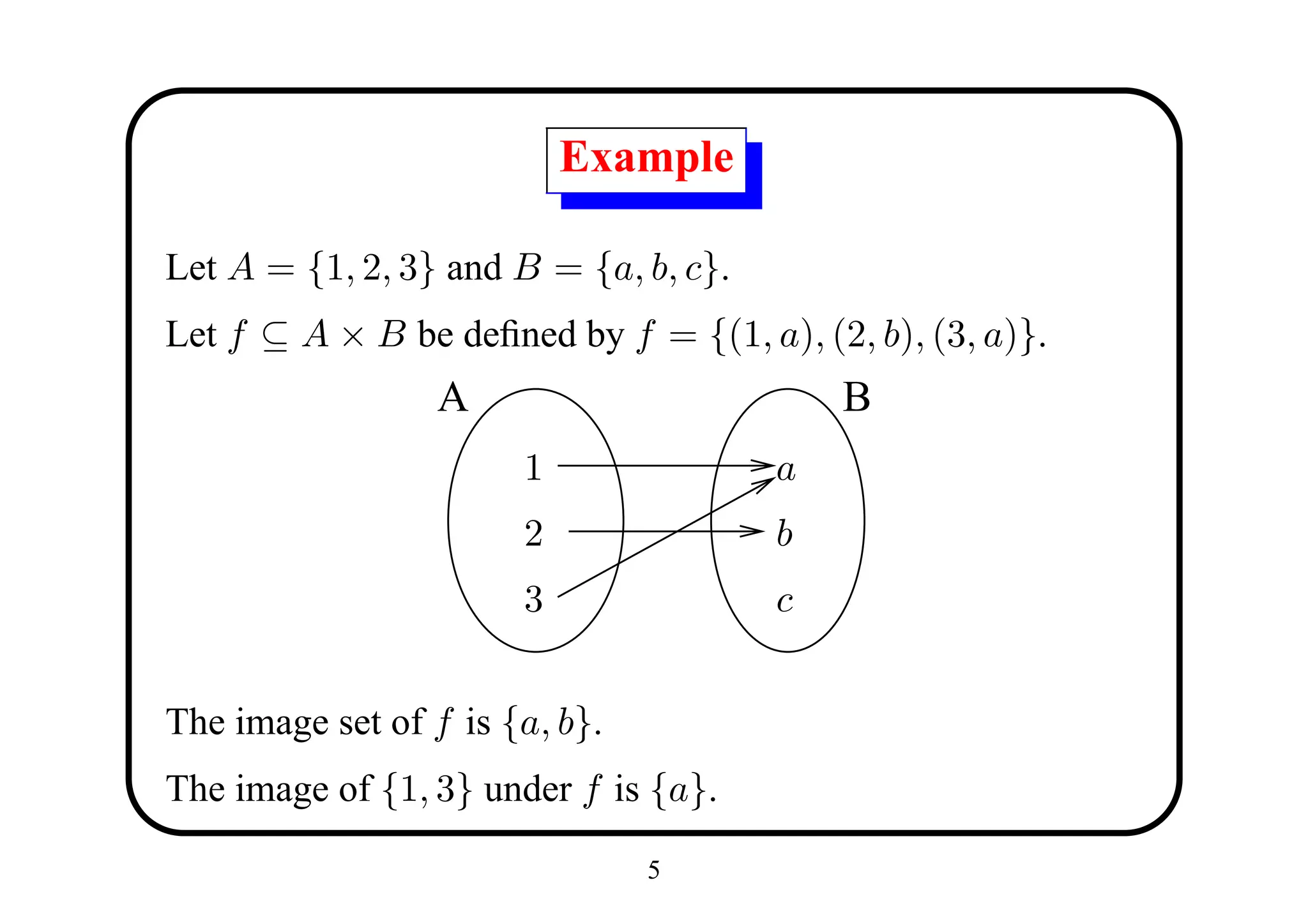
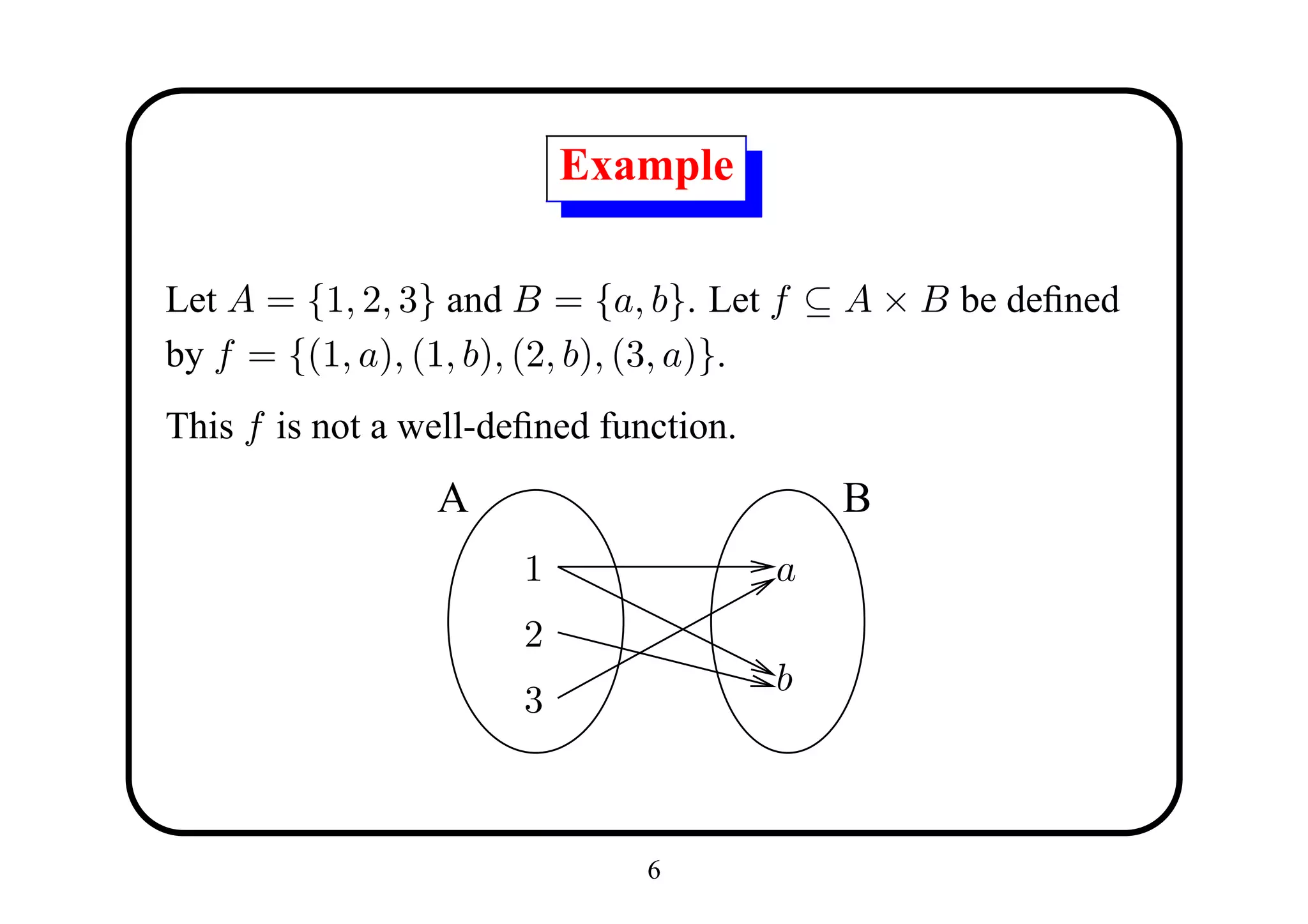

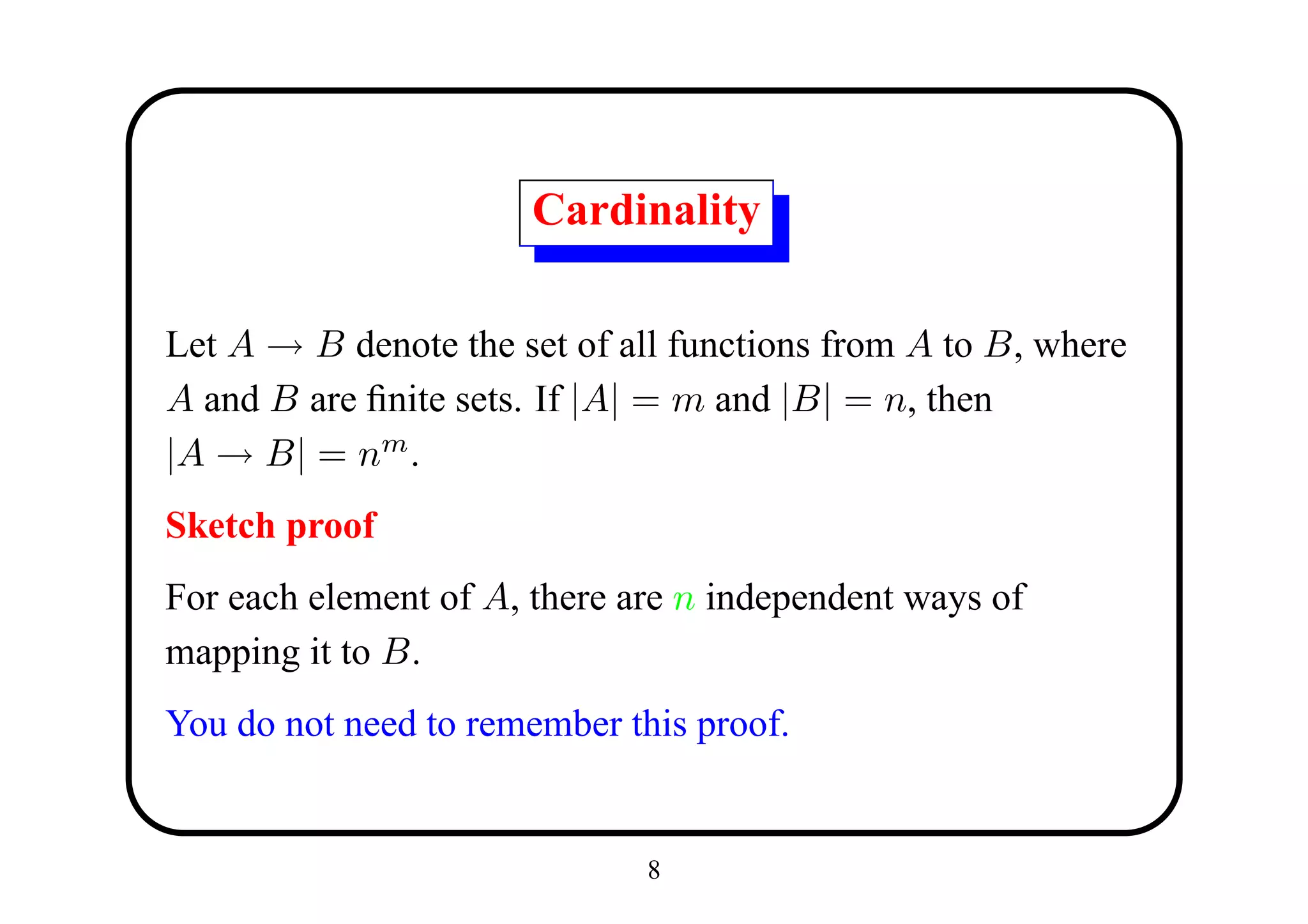

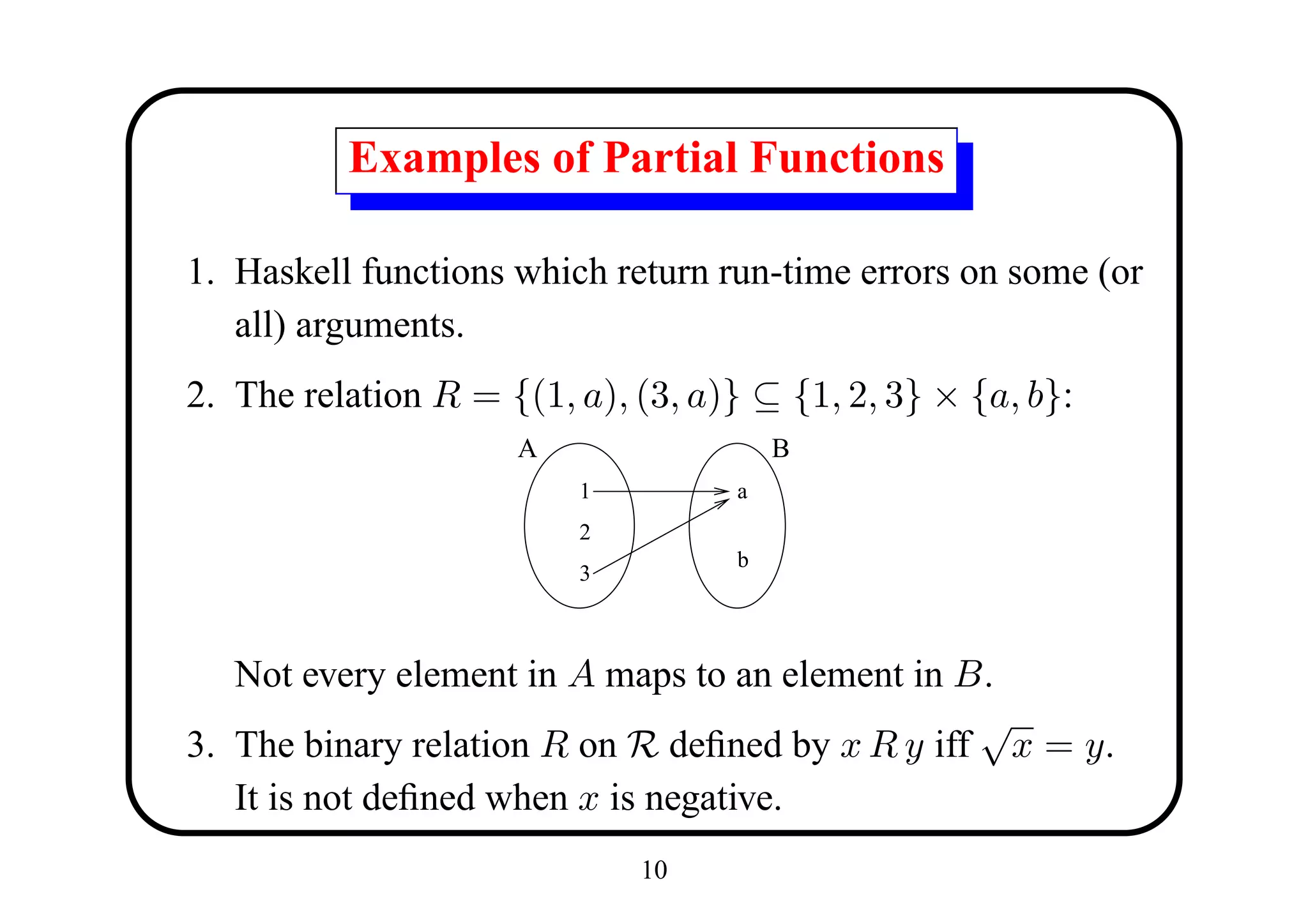
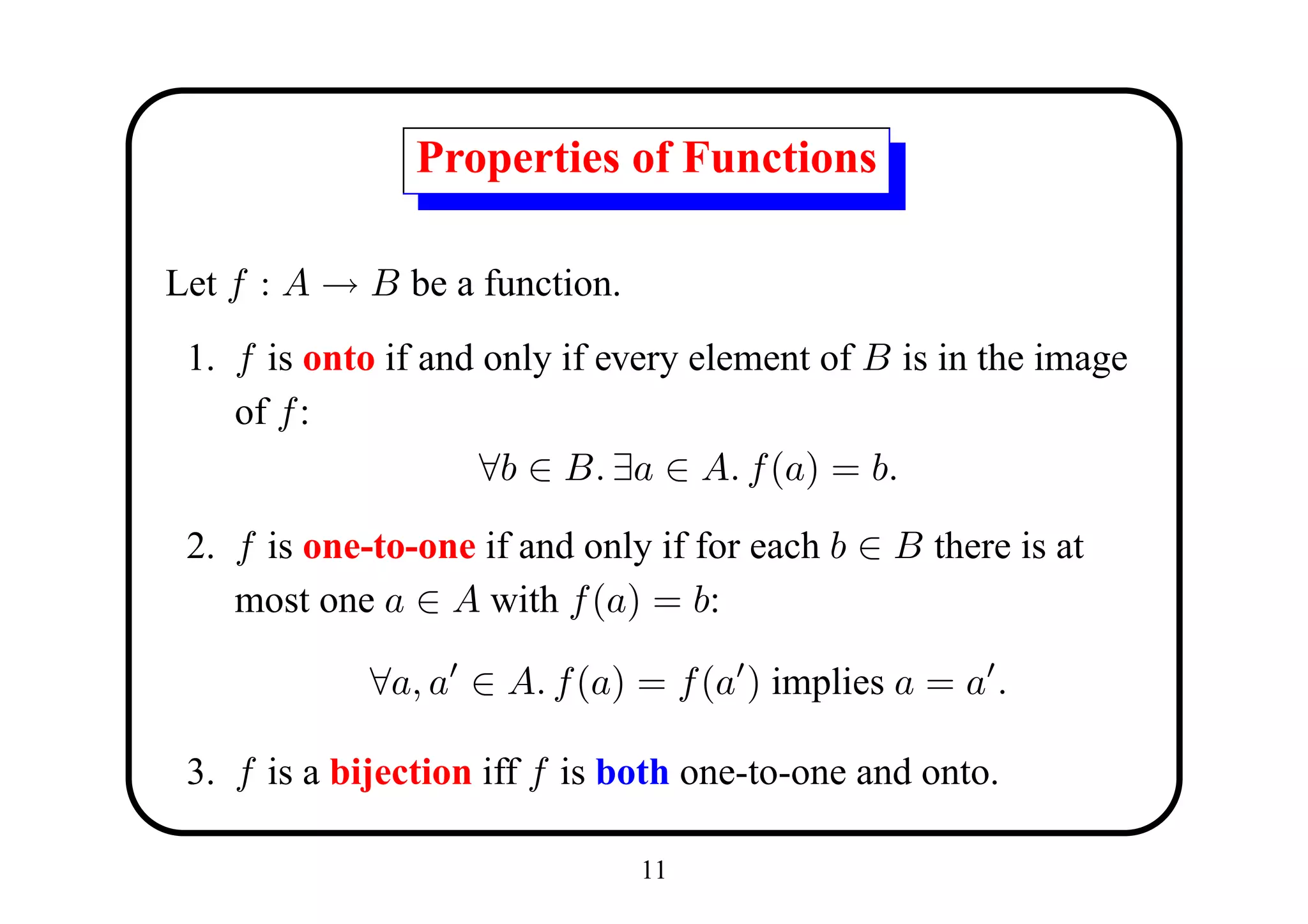


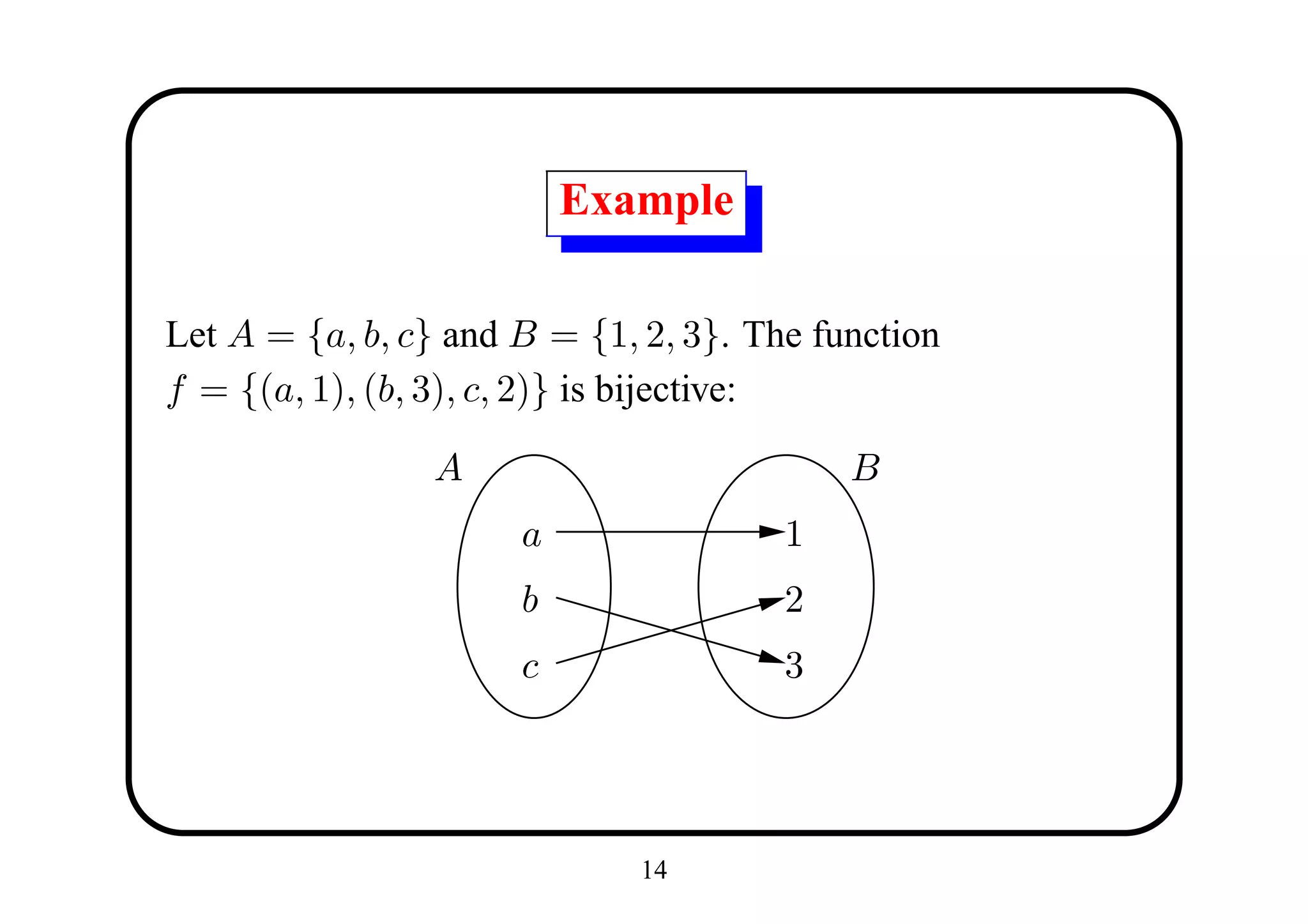
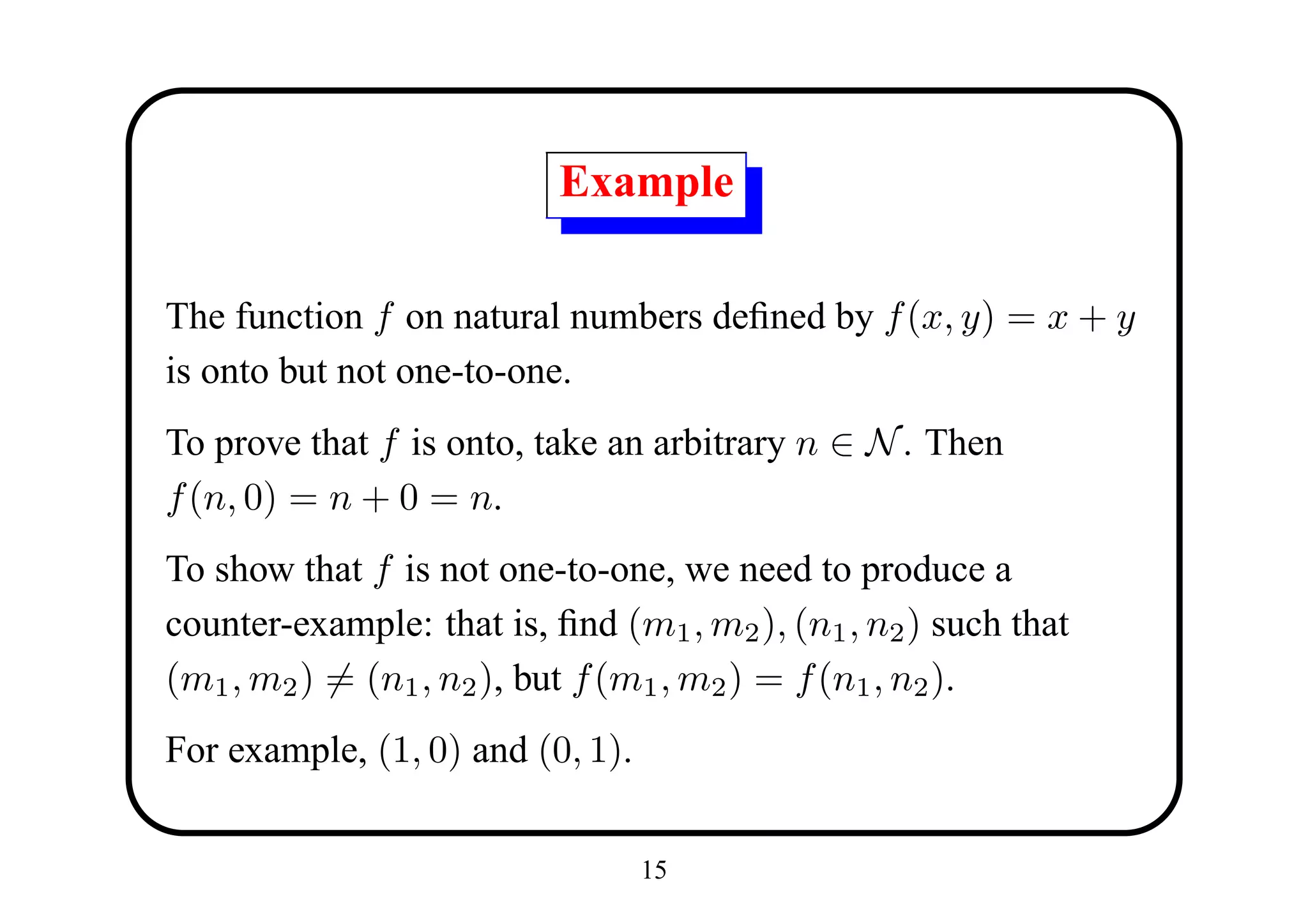
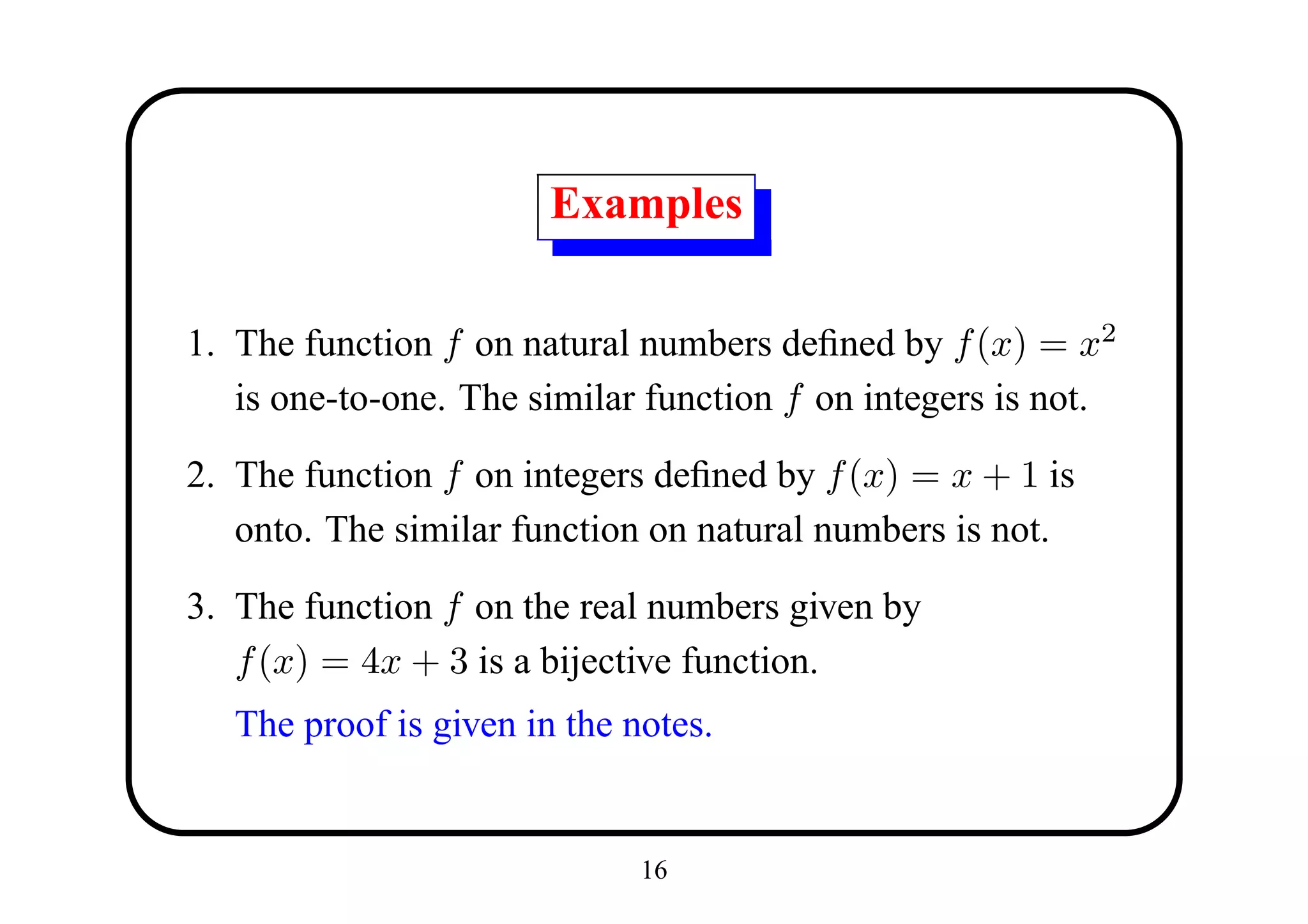
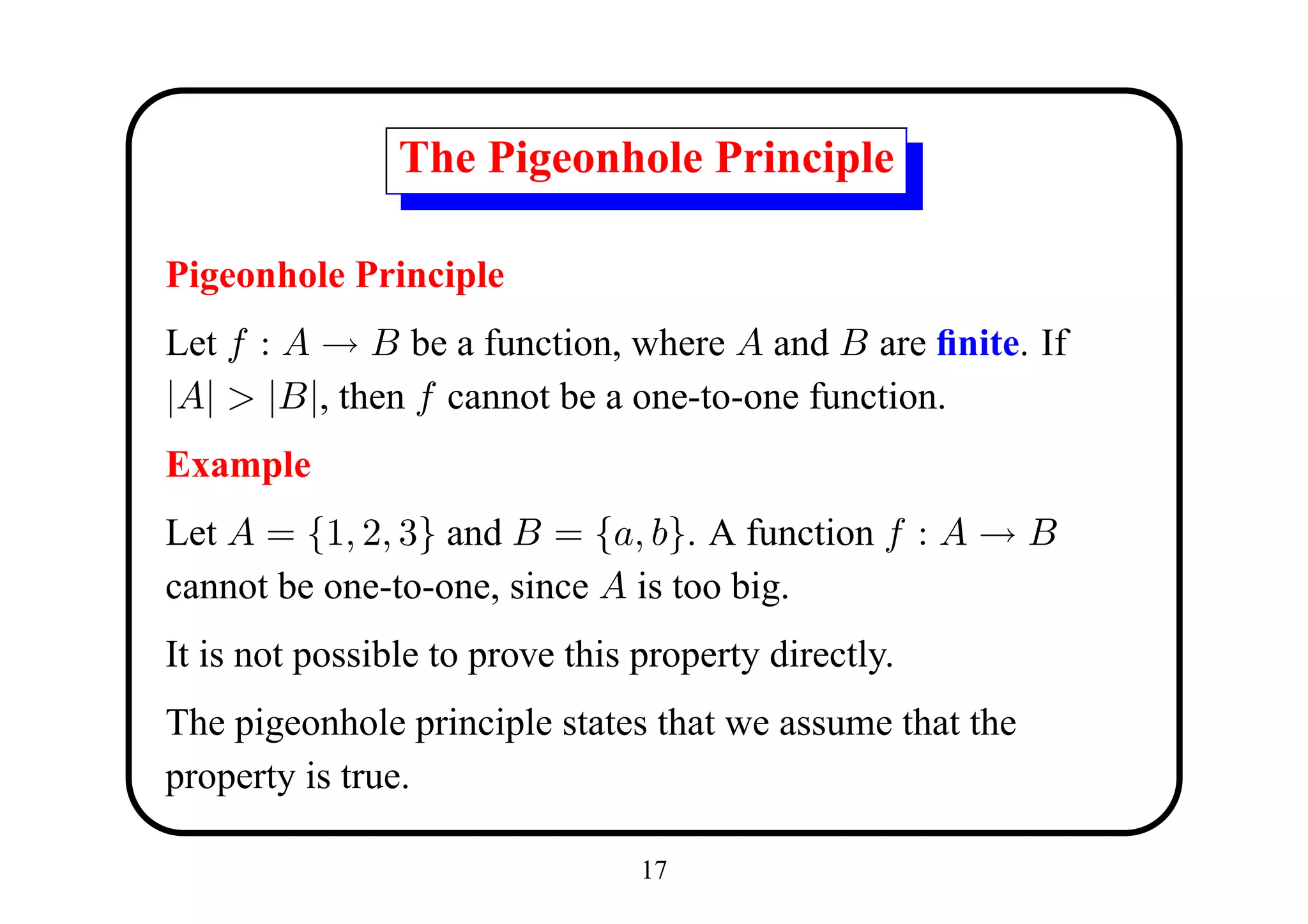
![Proposition
Let A and B be finite sets, let f : A → B and let X ⊆ A. Then
|f [X]| ≤ |X|.
Proof Suppose for contradiction that |f [X]| > |X|. Define a
function p : f [X] → X by
p(b) = some a ∈ X such that f (a) = b.
There is such an a by definition of f [X]. We are placing the
members of f [X] in the pigeonholes X. By the pigeonhole
principle, there is some a ∈ X and b, b ∈ f [X] with
p(b) = p(b ) = a. But then f (a) = b and f (a) = b .
Contradiction.
18](https://image.slidesharecdn.com/8functions-120924225627-phpapp02/75/8functions-18-2048.jpg)
![Proposition
Let A and B be finite sets, and let
f : A → B.
1. If f is one-to-one, then |A| ≤ |B|.
2. If f is onto, then |A| ≥ |B|.
3. If f is a bijection, then |A| = |B|.
19
Proof
Part (a) is the contrapositive of the
pigeonhole principle.
For (b), notice that if f is onto then
f [A] = B. Hence, |f [A]| = |B|. Also
|A| ≥ |f [A]| by previous proposition.
Therefore |A| ≥ |B| as required.
Part (c) follows from parts (a) and (b).](https://image.slidesharecdn.com/8functions-120924225627-phpapp02/75/8functions-19-2048.jpg)
